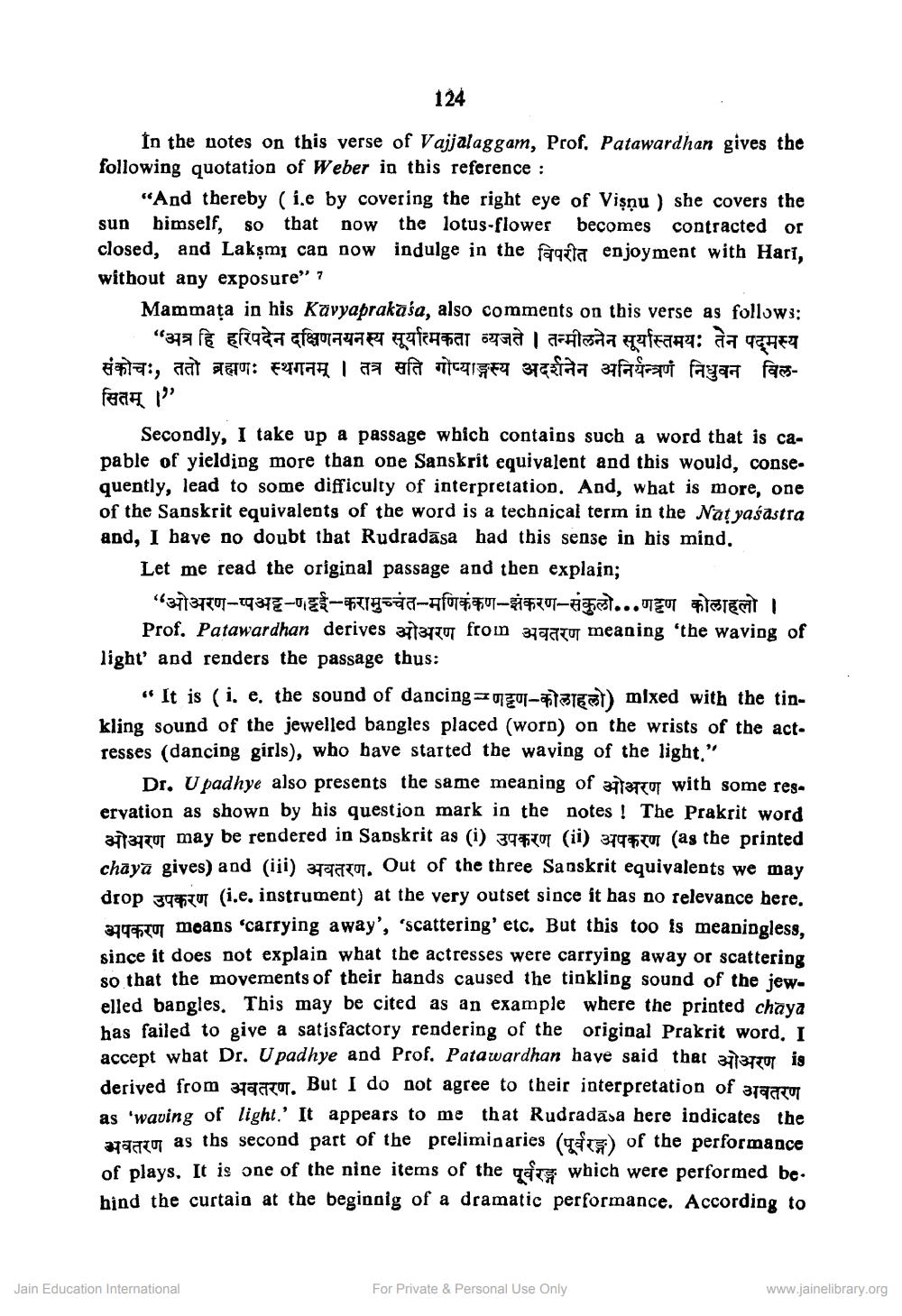________________
124
In the notes on this verse of Vajjalaggam, Prof. Patawardhan gives the following quotation of Weber in this reference :
“And thereby (i,e by covering the right eye of Vişnu ) she covers the sun bimself, so that now the lotus-flower becomes contracted or closed, and Lakşmi can now indulge in the fazla enjoyment with Harī, without any exposure"?
Mammața in his Kavyaprakaśa, also comments on this verse as follows:
"अत्र हि हरिपदेन दक्षिणनयनस्य सूर्यात्मकता व्यजते । तन्मीलनेन सूर्यास्तमयः तेन पदमस्य संकोचः, ततो ब्रह्मणः स्थगनम् । तत्र सति गोप्याङ्गस्य अदर्शनेन अनियन्त्रणं निधुवन विलfaay 1"
Secondly, I take up a passage which contains such a word that is capable of yielding more than one Sanskrit equivalent and this would, conse. quently, lead to some difficulty of interpretation. And, what is more, one of the Sanskrit equivalents of the word is a technical term in the Nat yaśāstra and, I have no doubt that Rudradāsa had this sense in his mind.
Let me read the original passage and then explain;
"3713770-19347-es-tig-ha-Af1901-*#70- ... NOT WISTEMI I
Prof. Patawardhan derives 3113170 from 37gatur meaning 'the waving of light' and renders the passage thus:
" It is (i, e. the sound of dancing=0301-031631) mixed with the tinkling sound of the jewelled bangles placed (word) on the wrists of the act. resses (dancing girls), who have started the waying of the light."
Dr. U padhye also presents the same meaning of 371STTOT with some reservation as shown by his question mark in the notes ! The Prakrit word
ओअरण may be rendered in Sanskrit as (i) उपकरण (ii) अपकरण (as the printed chaya gives) and (iii) 37aat. Out of the three Sanskrit equivalents we may drop 37470 (i.e, instrument) at the very outset since it has no relevance here. 379 means 'carrying away', 'scattering' etc. But this too is meaningless. since it does not explain what the actresses were carrying away or scattering so that the movements of their hands caused the tinkling sound of the jewelled bangles. This may be cited as an example where the printed chaya has failed to give a satisfactory rendering of the original Prakrit accept what Dr. U padhye and Prof. Patawardhan have said that 3113 Tur is derived from spamut. But I do not agree to their interpretation of graacor as 'waving of light.' It appears to me that Rudradāsa here indicates the
अवतरण as ths second part of the preliminaries (पूर्वरङ्ग) of the performance of plays. It is one of the nine items of the gets which were performed be. hind the curtain at the beginnig of a dramatic performance. According to
Jain Education International
For Private & Personal Use Only
www.jainelibrary.org




